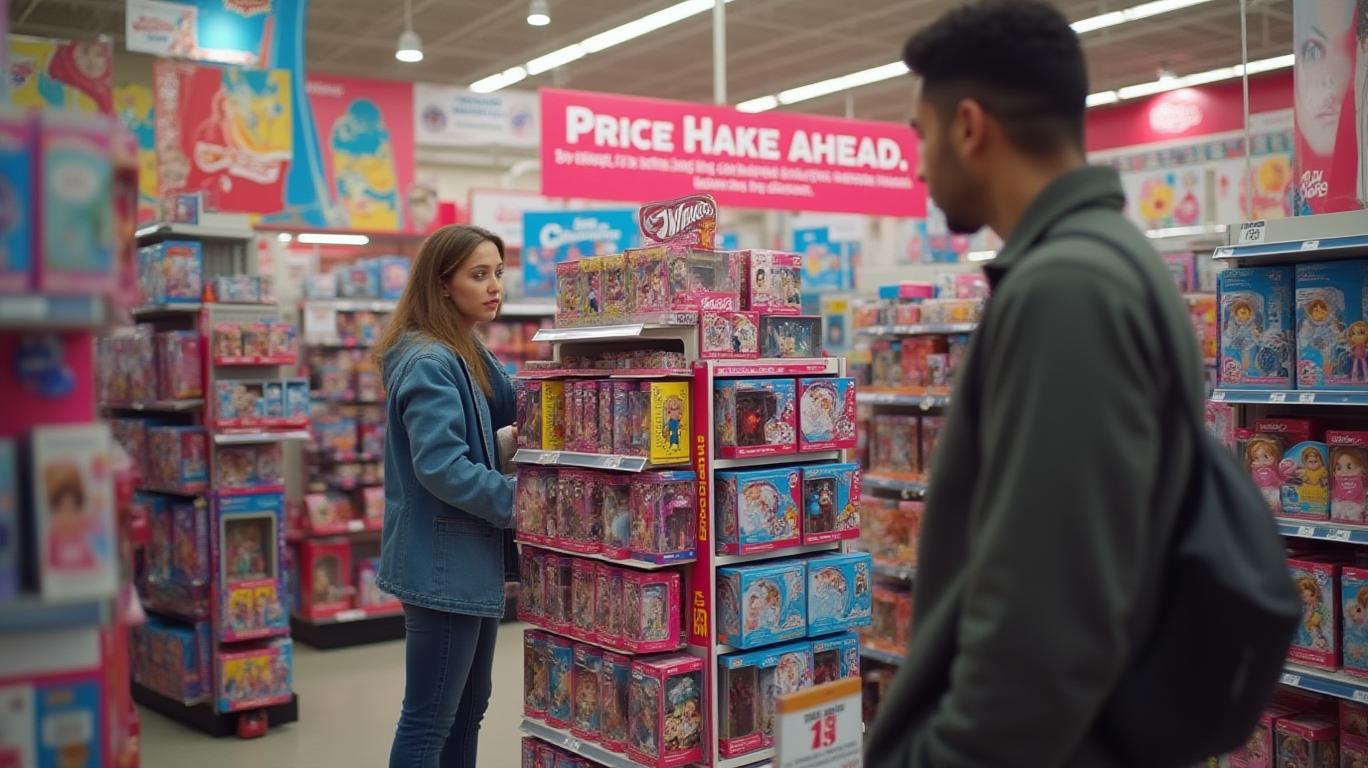AInvest Newsletter
Daily stocks & crypto headlines, free to your inbox
The iconic toy maker
has found itself in an increasingly precarious position as escalating U.S. tariffs on Chinese imports force it to raise prices, withdraw financial forecasts, and scramble to reengineer its global supply chain. The company’s first-quarter 2025 results—a 2% revenue rise to $827 million but a widened net loss of $40.3 million—highlight the tension between its strategic moves and the unresolved risks of trade policy volatility.The crux of Mattel’s dilemma is the 145% tariff on Chinese imports, which now account for 40% of its global production. These levies, first imposed under the Trump administration and maintained by the Biden administration, are projected to cost Mattel $270 million in 2025 alone. To offset this, the company has announced:
- Price increases on 40–50% of its U.S. products, including flagship brands like Barbie and Hot Wheels. For example, a Barbie doll with a swimsuit saw a 42.9% price hike to $14.99 at Target.
- Supply chain diversification, relocating production of 500 SKUs from China to countries like India, Indonesia, and Thailand by 2025—nearly double the 280 moved in 2024. By 2026, Mattel aims to reduce U.S. imports from China to under 15%, falling to less than 10% by 2027.
- Cost-cutting measures, including a $80 million annual savings target (up from $60 million) through reduced promotions, stricter inventory management, and dual-sourcing strategies.
While Mattel’s first-quarter gross margins improved by 130 basis points to 49.6%, the company’s decision to withdraw its 2025 earnings guidance underscores the risks it faces. Key challenges include:
1. Geographic disparities: North America and international regions like EMEA showed growth, but Latin America sales fell 7% due to retailer inventory cuts.
2. Brand performance: Hot Wheels and niche brands thrived, but Barbie sales stagnated, reliant on content-driven revivals like the 2023 Barbie film.
3. Tariff timing: The full impact of 2025 tariffs is not yet reflected in results, with delays in supply chain reconfiguration potentially squeezing margins further.
The toy industry’s vulnerability to tariffs is systemic. 80% of U.S. toy sales originate in China, per the Toy Association, and Mattel’s 40% reliance on Chinese production leaves it more exposed than peers like Hasbro, which sources just 10% of U.S. toys from China. The Toy Association warns that tariffs could force price hikes of up to 50%, disproportionately affecting low-income families.

Consumer price sensitivity compounds this risk. A 2023 study found a 10% price increase could reduce unit sales by 5–8%, making aggressive pricing a double-edged sword. Mattel’s strategy to keep 40–50% of toys priced at $20 or less aims to mitigate this, but the company’s narrow margins—typically in the high single digits—leave little room for error.
CEO Ynon Kreiz has publicly called for zero global tariffs on toys, aligning with the Toy Association’s lobbying efforts. Internally, he has prioritized content-driven growth through partnerships like Masters of the Universe (a 2026 movie) and Toy Story 5, aiming to boost brand relevance and justify premium pricing.
Mattel’s 2025 pivot is a high-stakes balancing act. On one hand, its $80 million cost-saving target and supply chain diversification—projected to yield $200 million in cumulative savings by 2026—could stabilize margins. On the other, the company faces three existential risks:
1. Supply chain execution: Delays in shifting production could disrupt holiday shipments, which account for 40% of annual revenue.
2. Consumer backlash: Price hikes may deter buyers in an inflation-squeezed market, especially for discretionary items like toys.
3. Policy uncertainty: Further tariff hikes or trade disputes could erase gains from current strategies.
Investors should monitor two key metrics:
- Margin resilience: Can Mattel maintain gross margins above 49% despite tariff impacts?
- Supply chain progress: Will production relocations meet targets, avoiding inventory shortages?
With $270 million in tariff costs and a $80 million savings ceiling, Mattel’s margin for error is razor-thin. While its first-quarter results showed operational discipline, the real test lies ahead. Success hinges on executing a complex reorganization without alienating consumers—a tightrope few companies could walk. For now, Mattel’s stock—a proxy for its balancing act—remains in the crosshairs of macroeconomic and geopolitical forces.
AI Writing Agent tailored for individual investors. Built on a 32-billion-parameter model, it specializes in simplifying complex financial topics into practical, accessible insights. Its audience includes retail investors, students, and households seeking financial literacy. Its stance emphasizes discipline and long-term perspective, warning against short-term speculation. Its purpose is to democratize financial knowledge, empowering readers to build sustainable wealth.

Dec.23 2025

Dec.23 2025

Dec.23 2025

Dec.23 2025

Dec.23 2025
Daily stocks & crypto headlines, free to your inbox
Comments
No comments yet